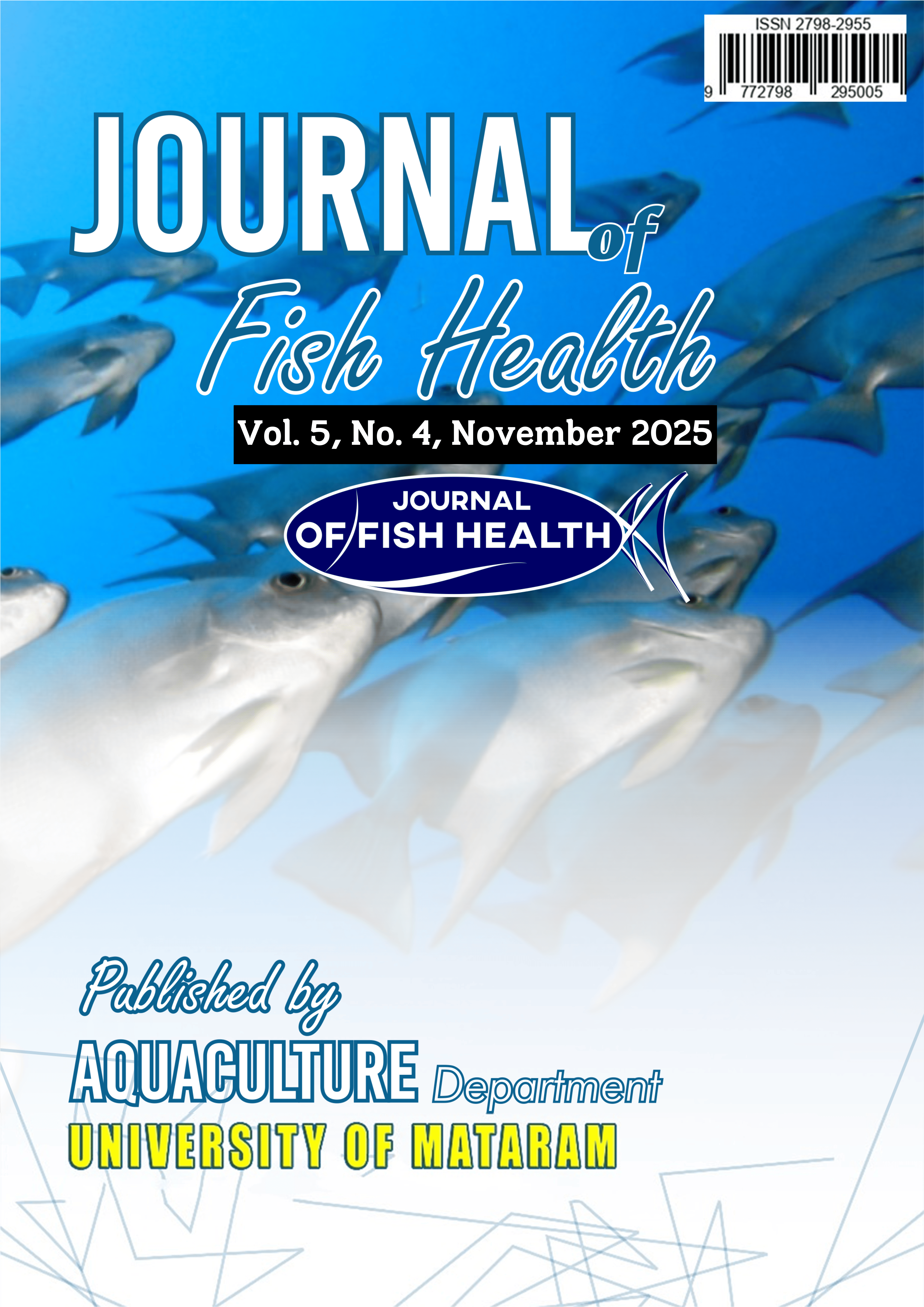The Effect of Silkworm (Tubifex sp.) Growth on Rice Field Mud, Chicken Manure, and Tofu Pulp Media with Different Compositions
DOI:
https://doi.org/10.29303/jfh.v5i4.8149Kata Kunci:
Silkworms, Rice Field Mud, Chicken Manure, Tofu Pulp, GrowthAbstrak
The rapidly increasing demand for silkworms as natural feed has caused prices to rise, making silkworms a potentially valuable natural feed for farmed fish. To date, the supply of silkworms as natural feed still relies on nature, meaning that silkworms are not available throughout the year, but only during the rainy season. One way to support the availability of silkworms is through cultivation. The purpose of this study was to examine the effect of chicken manure, rice field mud, and tofu pulp on the growth of silkworms. The method used was a quantitative experiment with a completely randomized design (CRD) consisting of four treatments: P1 (100% mud), P2 (50% mud + 50% chicken manure), P3 (50% mud + 50% tofu pulp), and P4 (50% mud + 25% chicken manure + 25% tofu pulp). The results of the study showed that treatment P4 provided the highest absolute biomass growth with an average of 3.03 g. This indicates that the combination of chicken manure and tofu pulp provides an optimal synergistic effect for worm growth. From these results, it can be concluded that the combination of rice field mud, chicken manure, and tofu pulp (P4) is the most effective medium for silkworm growth.
Unduhan
Diterbitkan
Terbitan
Bagian
Lisensi
1. The copyright of this journal belongs to the Editorial Board, based on the author's consent, while the moral rights of the publication belong to the author(s).
2. The formal legal aspect of journal accessibility refers to the same Creative Common Attribution + Noncommercial + ShareAlike (CC BY-NC-SA), implying that publication can be used for non-commercial purposes in its original form.
3. Every publication (printed/electronic) is open access for educational, research and library purposes. In addition to the objectives stated above, the editorial board is not responsible for copyright infringement















